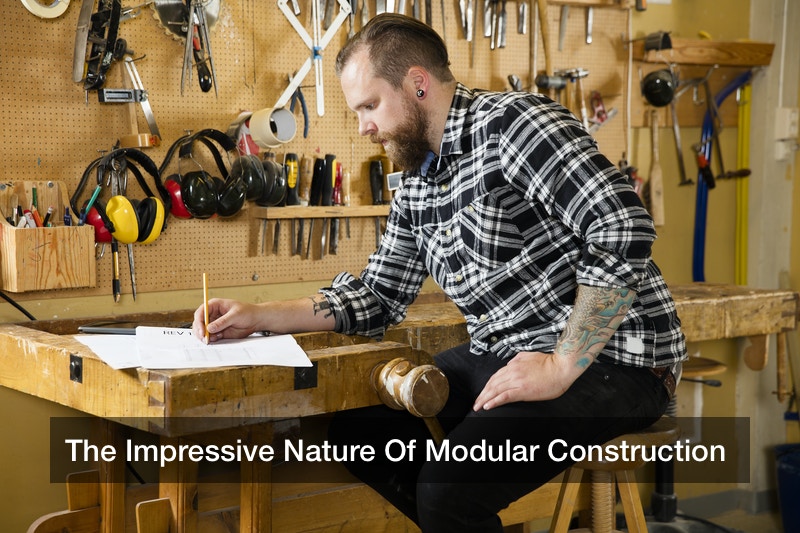
Modular construction, like inplant offices, is a popular method of construction that many in the construction field utilize. You would be hard pressed to find engineers, contractors, or architects that have not used modular design in some form or another in their projects. In fact, those fields have at least 90 percent, 84 percent and 76 percent, respectively. You will find them in commonly used in warehouses, like inplant offices, entire office buildings, even hotels.
But what makes them so special? To put it simple: cost, time, and waste.
How Does It work?
Modular construction is a lot like building a puzzle, but one that should not be falling apart. Pieces of this puzzle, the house, are put together in sections rather than from the skeleton and up. When each piece is finished, it is transferred to its destined site and the puzzle is completed there. Think of it like splitting up a puzzle among friends, giving each a part to do and then joining them altogether in the end to make one big picture.
Modular construction even has options for portable office walls, inplant offices that can be moved from one modular office building to another.
Reducing Construction Time
Nothing is worse for a contractor that has a specific deadline only for it to be pushed back due to weather. You cannot control it, nor is it your fault. Nature is not a force that can be reasoned with. However, what mankind can do is shelter ourselves the best we can and for the most part, mankind does it pretty well. Leaving employees to work in the rain and cold can cause way more issues than needed.
This is the mentality that modular construction companies like to move forward with when building these pieces. And these companies have found a way around weather by constructing pieces inside another building, a Russian doll of construction. This allows for employees to keep building all year round because of the controlled temperature of the in-house work environment.
With employees working without delay, projects can be finished on schedule and sometimes ahead of schedule since 60 to 90 percent of prefabricated construction is done within controlled environments. It once took a Chinese modular construction company 19 days to erect a 57-story building.
Reducing Construction Cost
It goes without saying that reducing time on a construction project has its own cost reductions. The shorter the construction time, the less expensive a project is. A business can see a reduced construction cost anywhere from 9 percent to as much as 20 percent when modular construction is utilized.
Reducing Energy And Waste Materials
Just like reducing time on a project can reduce cost, so can reducing waste materials. However, this is a two-layered benefit.
Oftentimes when construction is done outside, materials can be thrown about by weather or by employees even. And if materials get wasted due to weather, then that can cost a company money to replace. Modular construction can see a waste reduction of 90 percent, if done properly, according to the UK-based WRAP, or Waste and Resources Action Programme.
The same can be said about energy consumption. Modular construction reduces energy costs since much of it isn’t wasted, and a business can see a 67 percent reduction in it, as well as the occupants in later days.

